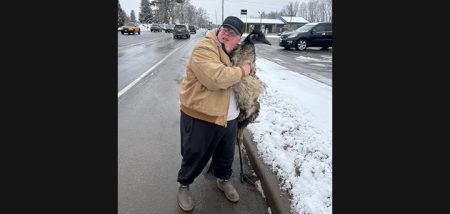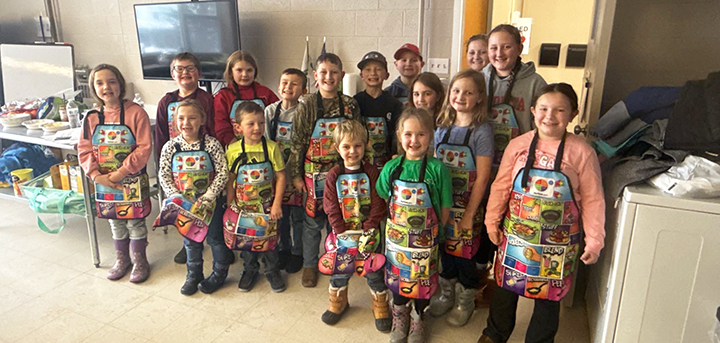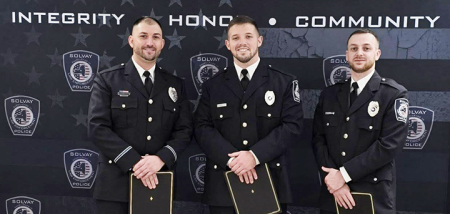How I Discovered A Passion For Dog Training
Published:
March 16th, 2023
By:
Sarah Genter
 My little gremlin Penny. I had no idea when I brought her home that she'd lead me down the rabbit hole of professional dog training. (Photo by Dustin Genter of 5th Dimension Photography)
My little gremlin Penny. I had no idea when I brought her home that she'd lead me down the rabbit hole of professional dog training. (Photo by Dustin Genter of 5th Dimension Photography)
A few months ago, I began a course to become a certified dog trainer. Now, there is technically no training, certification, license, or degree you need to call yourself a dog trainer, but those that take the profession seriously and have a passion for the field will go through the process of becoming certified. These courses ensure you have the knowledge and skills needed to be an effective, successful, and most importantly, humane dog trainer.
Learning how to train dogs professionally is not something I would have ever expected to do. While I’ve been an animal lover my whole life, I had a run in with a German shepherd in 2020 that left me fearful of dogs I didn’t know. I made it out relatively unharmed, save for a few puncture wounds in my face, but it took me a few years to feel comfortable around large dogs again.
Then, this past October, my husband and I bought our first house. Around the same time, my uncle had posted on Facebook that his dog had puppies, and they were ready for their forever homes. I convinced my husband to go look at the puppies, and the rest is history.
We brought home a two-pound bundle of joy and mayhem and named her Penny. Our little gremlin, as we like to call her, has grown to a five-and-a-half-pound mix of miniature pinscher, schnauzer, beagle, Maltese, Chinese crested, and Boston terrier, complete with one pointed and one floppy ear, a hilariously visible underbite, and big bug eyes.
Penny is my first dog as an adult and, I’ll admit, I went a little crazy. Although she’s tiny, I wanted to make sure she was well behaved — no yappy ankle biters in my house! I quickly devoured three books on dog training, countless online articles, and became hooked on a goofy but informative dog training TV show called “It’s Me or the Dog.”
While watching the show, I always wondered how people even became professional dog trainers. I had never seen a college list “dog training” as one of their degrees. But, it would be a few more months until I looked into it.
I started training Penny a few days after we brought her home, and was amazed at how smart she was. She seemed to pick up on most cues within a few minutes.
There were, of course, a few things that took more time, like teaching her to go to her crate on command. But there was nothing quite like the moment I saw it click for her, when she finally associated the word or hand signal with the correct action.
But it wasn’t until my editor, Tyler, brought home his own puppy that I really felt the urge to get more serious about dog training. Hearing about another person’s experiences with training a new puppy, talking about techniques I had read about or seen on TV, and teaching Tyler to use a clicker got me hooked on it all. I loved talking about it, teaching others, and helping people learn how to train their dogs effectively and without force.
So, a few months ago I began looking into dog training professionally. I discovered affordable online courses to become a certified dog trainer, and I decided, why not? I may never train dogs as a full time job, but it’s still an interesting subject and a valuable skill to have, even if it’s only ever applied with my own dogs.
I took the plunge, and the experience has been amazing so far. I’m about halfway through the course, and I’ve learned about a wide range of topics, each more interesting than the last.
So far I’ve learned about the history of dog training, safe training procedures, ethology, breed groups and characteristics, stages of development, socialization stages, canine communication, calming signals and fear responses, learning theory, conditioning, and the four training quadrants. I also earned my canine first aid and CPR certification.
Each step of the way has been more eye opening than the last. I can’t tell you how many times I’ve learned something new and thought, “Oh, so that’s why Penny does that!” In addition to learning a set of new skills, I’ve also gained a much deeper understanding of my own dog and the way she thinks, and why she behaves the way she does. That alone makes this course worth its weight in gold.
Because the coursework is all online, the school adds in video assignments, where you must record yourself using the theories and techniques learned in “class” with a real dog. To earn your certification, you also must clock a certain number of hours working with dogs that are not your own.
To supplement my online learning, I began volunteering at the Chenango SPCA as a dog walker. I can’t say enough about how kind and welcoming the staff has been, and Kathy, the shelter manager, has been so supportive of my endeavor to become a certified dog trainer.
Working with the dogs at the shelter is an invaluable experience that I’m so grateful to have. No two dogs are alike, and it’s extremely helpful to apply what I’ve learned to real dogs on the spot. It’s one thing to read about something like canine body language, but an entirely different thing to analyze a real dog’s body language in real time. I don’t think I would feel as confident in my knowledge if it weren’t for the opportunity to work with so many dogs.
I am, of course, still learning. But I’m thrilled at where this decision has taken me. Hopefully I’ll be certified within the next couple of months, and after that there are even more opportunities for further learning.
One of the big draws with dog training for me was the unending opportunities to learn more. The field is always evolving, and there are even annual conferences where others with a passion for dog training gather for informational seminars. After becoming certified, my next goal is to get certified with the Certification Council for Professional Dog Trainers (CCPDT), which is basically the gold standard for professional dog trainers.
Beyond that, there are several more courses I could take to earn specialized training, such as dog agility, or even training service and police dogs. I would also love to train Penny further and get her licensed as a therapy dog.
But, one step at a time! For now my main focus is completely my first certification, and seeing where that takes me.
Overall, the driving factor behind getting certified as a dog trainer was to help other people train their dogs. I’m sure we’ve all visited a family member or friend with a dog who just will not stop barking, or who has to greet you by jumping up on you. I have a friend who’s dog likes to jump, and when he does he’s taller than me! Talk about intimidating.
So, I want to hear from you! What do you want to learn about dogs? Do you have questions about how to train a dog to do something, or not do something? Do you want to know what your dog’s quirky behavior means? Or how to recognize when your dog is happy, or scared? Let me know!
Email your questions to me at sgenter@evesun.com. I’ll be writing columns regularly exploring the many facets of dog training, and answering your questions about your own canine companions. Of course, because I am still learning, I may hold off on questions until I feel I understand the topic well enough to explain or give advice on training.
All of my training involves positive reinforcement methods and least invasive, minimally aversive (LIMA) techniques. This ensures training stays positive and engaging for your dog, and never inflicts any kind of harm. I’m so excited to share what I’ve learned, and help others understand and build a stronger bond with their dogs.
Author: Sarah Genter - More From This Author
Comments









